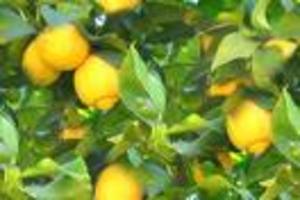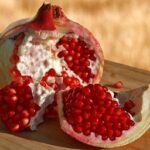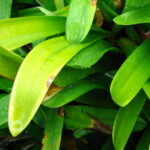Lemons, their very essence when added to recipes makes any dish instantly pop with flavor. Their bright color and zesty taste enhances any plain ordinary plate of food into something spectacular. They are the quintessential fruit that compliments fish, chicken, salads, sauces, marinades, desserts, frozen treats, and drinks.
Wealthy Victorians grew lemon trees indoors as a sign of prestige and used the lively scented plants as a way of keeping their large estates smelling fresh at all times. Citrus plants have very attractive, glossy dark green leaves and the scent of their flowers is absolutely incredible. The Victorians also served fresh lemon wedges with their tea during their afternoon tea dances. Of course the lemon had arrived in America long before the Victorian’s discovered its wonderful flavor that accents drinks and food, along with the lemon’s mesmerizing fragrance.
Lemons are thought to have originated in northern India, and were later introduced into Assyria, where they were discovered by soldiers serving Alexander the Great, who took them back to Greece. The lemon later reached the Mediterranean after the Romans discovered a direct sea route from the southern end of the Red Sea to India. The Arabs were largely responsible for the cultivation of the fruit in the Mediterranean region.
Christopher Columbus introduced citrus trees to the Island of Haiti in 1493 during his second voyage, by planting the seed of the lemon, as well as other citrus trees in Haiti’s lush soil. Documented records show that citrus trees eventually became well established by the Spanish in coastal South Carolina and Saint Augustine, Florida by the year 1563.
It is common knowledge that lemons were discovered to be a valuable protection against scurvy, and carried by sailors on every sea voyage. It is ironic, however, that the crews responsible for bringing the lemon to other countries were actually carrying the fruit that would have prevented the disease they dreaded. This knowledge was obscured by a mass of circulating quack cures until the British naval surgeon, James Lind, endorsed their use in his “Treatise on the Scurvy”, written in 1753. Even so, it was not until the end of that century before the Royal Navy began to issue lemons to its sailors.
Lemons discovered in Northern India were quickly prized for their unique flavor that enhanced food and drinks. The natives of India referred to lemons as the “golden apple,” and they were traded for a variety of precious items. Lemons have since made their way across the world with Arizona and California producing approximately 95% of the United States lemon crop.
The Sunkist Company prefers lemons that are seedless; is uniform in color, shape, and size; resists cold temperatures; and ships well without bruising. In California, where unseasonable cold snaps are less of a problem than in Florida, the preferred cultivators are the attractive, bright yellow Eureka or Lisbon lemon. Both have thick skins that resist bruising, and their ample size catches the consumer’s eye.
The Many Uses of Lemons
Lemon Balm is excellent for its calming properties, and has been used for centuries as a mild form of drugs like Valium, and because of its antibacterial properties, Lemon Balm may be used in cleaning sores, scrapes, and cuts.
Lemons aid in stimulating circulation. This is the reason why many aromatherapy soaps have lemon essential oil. Because of its high vitamin C content, it helps boost the immune system.
A bowl of fresh lemons will add a wonderful fragrance and cheery appearance to a room for days.
Wipe cutting boards with lemon juice to eliminate the smell of garlic, onions, or fish.
Add a slice or two of fresh lemon to a glass of water. It not only has visual appeal, it actually makes the water taste and smell better.
If you are reducing your sodium or fat intake, try squeezing a wedge of fresh lemon onto salads, steamed vegetables, soups and stews in place of butter or salt.
Mix pressed pureed or finely minced garlic with lemon juice and salt to mellow out that raw-garlic taste before adding it to raw sauces or spreads such as hummus or fresh salsas.
Organic lemons are the best choice when zesting the peels for recipes. The lemons should be bright and firm with a fine grained skin.
Nutritional Value of Raw Lemons
Lemons are packed full of Vitamin C which helps form collagen, a glue-like fibrous protein in bone, cartilage, tendons and other connective tissue. Vitamin C helps give structure and maintain such body parts as bones, cartilage, muscle, veins, capillaries and teeth.
Lemon Recipes
Old Fashioned lemonade
6 large lemons
1 cup sugar
2 quarts cold water
Ice
Directions:
Cut the lemons in half. Squeeze the juice into a large measuring cup. Strain the juice, discarding the seeds, but not the pulp. Measure out 1 and one-half cups lemon juice, using any leftovers for another batch. Combine the juice with the sugar and stir until all the sugar is dissolved. Add the water. If you are going to put the ice in the pitcher as well as the cups, use less water.
Lemon-Marinated Flank Steak
1/4 cup fresh-squeezed lemon juice
1/4 cup dry white wine
1/4 cup olive oil
2 cloves of garlic, peeled and crushed flat with the back of a knife
2- or 3-inch sprig of fresh rosemary
1 bay leaf, crumbled
1 teaspoon of cracked black peppercorns
Salt to taste
1 two-pound flank steak
Directions:
In a small bowl, mix together all ingredients except the flank steak. Place the flank steak in a large plastic zipper-lock plastic bag. Pour marinade over meat, seal bag allow to marinate in the refrigerator anywhere from 30 minutes to two hours. Sear on a hot grill to lock in the flavors. Cook to desired wellness.
Avocado Salsa
1 avocado cut into cubes
1 cup chopped green bell pepper
1/2 cup salsa
1/4 cup chopped fresh parsley
1 tbsp. lemon juice
1/2 cup diced red onion
Directions:
In medium bowl, toss avocado with lemon juice, add remaining ingredients, stirring to combine. Set aside for 15 minutes. Serve with taco chips.
Lemon-Garlic Butter Mushrooms
24 Large mushrooms
1/2 cup butter, not melted
2 cloves garlic, minced
2 shallots, minced
1/2 cup minced parsley
Juice from 1/2 lemon
1/2 tsp. salt
1/4 tsp. pepper
Directions:
Clean mushrooms with a slightly damp cloth. Remove the stems. In a small bowl, combine butter, shallots, garlic and parsley. Add lemon juice, salt and pepper. Stir until blended well. Place mushrooms in a shallow baking dish. Fill each mushroom with a dollop of garlic butter mixture. Bake at 400 degrees for 10 to 12 minutes. Serve as a side dish or along side of steak.
Frozen Lemon Lime Summer Slushies
3 (3 oz.) pkgs. lime Jell-O
13 cups boiling water
4 cups sugar
2 (46 oz.) cans pineapple juice
1-16 oz. bottle Real lemon juice
2 quarts. Ginger ale
Directions:
Dissolve Jell-O in 9 cups boiling water. Dissolve sugar in remaining 4 cups. Add to Jell-O mixture. Add juices. Pour into 2-5 quart ice cream buckets and freeze. Allow some time to thaw before serving, until slushy. Just before serving, add 1 bottle of Ginger ale to each bucket of slushie mixture.
Lemon Cheesecake
1 (3 oz.) pkg. lemon Jell-O mix
1 cup boiling water
3 tbsp. freshly squeezed lemon juice
1 (8 oz.) pkg. Philadelphia cream cheese
1 cup granulated sugar
1 tsp. vanilla
12 oz. Cool Whip
2 graham cracker crust pie shells
2 lemon slices
Directions:
Mix Jell-O, water and juice together. Set aside to cool. In a separate bowl, mix the cream cheese, sugar and vanilla, then fold it into the Jell-O mixture. Gently fold in the Cool Whip. Place the mixture into the prepared pie shells. Garnish the pies with a dollop of whipped topping and a lemon slice. Refrigerate before serving.





